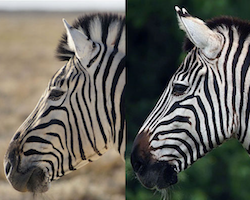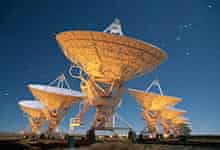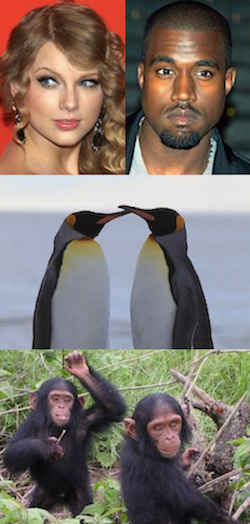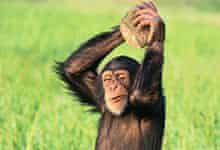a sailer who discovered Florida
who is juan ponce de leon
10 + 2
12
What is the universe made of?
Astronomers face an embarrassing conundrum: they don’t know what 95% of the universe is made of. Atoms, which form everything we see around us, only account for a measly 5%. Over the past 80 years it has become clear that the substantial remainder is comprised of two shadowy entities – dark matter and dark energy. The former, first discovered in 1933, acts as an invisible glue, binding galaxies and galaxy clusters together. Unveiled in 1998, the latter is pushing the universe’s expansion to ever greater speeds. Astronomers are closing in on the true identities of these unseen interlopers.
Are different races subspecies?
No! Races are not subspecies of the human species. There is only one “race”—the human race. So why can’t we sort humans into subspecies like we can with other animals? The answer is that the human species doesn’t have much genetic variation. We are too alike to split into groups.
a nuclear accident that know leave a city dangers
chernobyl
the war for Independence
what was the revolution
900 times 0.1
9
2 How did life begin?
Four billion years ago, something started stirring in the primordial soup. A few simple chemicals got together and made biology – the first molecules capable of replicating themselves appeared. We humans are linked by evolution to those early biological molecules. But how did the basic chemicals present on early Earth spontaneously arrange themselves into something resembling life? How did we get DNA? What did the first cells look like? More than half a century after the chemist Stanley Miller proposed his “primordial soup” theory, we still can’t agree about what happened. Some say life began in hot pools near volcanoes, others that it was kick-started by meteorites hitting the sea.
What is a subspecies?

What is a subspecies?

These two zebras are subspecies within the same species of plains zebra. On the right is Grant's zebra (image by David J. Stang), and on the left is Burchell's zebra (image by Hans Hillewaert).
A species is a group of living things that can breed with each other. We can divide some (but not all) species into smaller groups called subspecies. These groups can still breed, but they have physical and genetic differences. Differences between groups add up when they live in separate places for a long time. This means that we can sort some animals based on their appearance or their DNA.
america first nuclear bombe drop on japan
Hiroshima
someone who help protest without violence and help martin king jr
who is Mahatma Gandhi
100-50
50
3 Are we alone in the universe?
3 Are we alone in the universe?

Perhaps not. Astronomers have been scouring the universe for places where water worlds might have given rise to life, from Europa and Mars in our solar system to planets many light years away. Radio telescopes have been eavesdropping on the heavens and in 1977 a signal bearing the potential hallmarks of an alien message was heard. Astronomers are now able to scan the atmospheres of alien worlds for oxygen and water. The next few decades will be an exciting time to be an alien hunter with up to 60bn potentially habitable planets in our Milky Way alone.
What’s the difference between race and subspecies?
What’s the difference between race and subspecies?
A long time ago, the words race and subspecies were used to mean the same thing in biology. This was before we knew how much or how little genes could differ between animals. Now we only use subspecies to refer to living things that aren’t human. We only use race when we talk about humans. We often try to group humans by race based on how they look. While humans may look different on the outside, our DNA looks very similar. Because we are so similar, scientists say that we can't use race to sort humans either. Are humans really so alike?

Comparisons of humans, emperor penguins, and chimpanzees. Which of these pairs of animals do you think has the most variation within their species? Taylor Swift and Kanye West by David Shankbone; Penguins by Liam Quinn; Chimpanzees by Delphine Bruyere.
Take a look at the photos on the left. There are three pairs of two members of the same species. Which pair do you think is more genetically similar? Would you guess Kanye West and Taylor Swift are more alike, or two penguins? What about Kanye and Taylor versus two chimps? It may surprise you to learn that penguins have twice as much genetic variation as humans do. And this subspecies of chimp has more genetic variation than all the humans on earth.
the second nuclear bombe drop on japan
big boy
the British gun shot violation that kill 5 men
what is the Boston massacre
10 times 10
100
What makes us human?

What makes us human?

Just looking at your DNA won’t tell you – the human genome is 99% identical to a chimpanzee’s and, for that matter, 50% to a banana’s. We do, however, have bigger brains than most animals – not the biggest, but packed with three times as many neurons as a gorilla (86bn to be exact). A lot of the things we once thought distinguishing about us – language, tool-use, recognising yourself in the mirror – are seen in other animals. Perhaps it’s our culture – and its subsequent effect on our genes (and vice versa) – that makes the difference. Scientists think that cooking and our mastery of fire may have helped us gain big brains. But it’s possible that our capacity for co-operation and skills trade is what really makes this a planet of humans and not apes.
what are know as king of the jungle
lion
nuclear energy break what a part to make energy
atoms
are first us president
who is George Washington
0 times 11000
0
5 What is consciousness?
Advertisement
We’re still not really sure. We do know that it’s to do with different brain regions networked together rather than a single part of the brain. The thinking goes that if we figure out which bits of the brain are involved and how the neural circuitry works, we’ll figure out how consciousness emerges, something that artificial intelligence and attempts to build a brain neuron by neuron may help with. The harder, more philosophical, question is why anything should be conscious in the first place. A good suggestion is that by integrating and processing lots of information, as well as focusing and blocking out rather than reacting to the sensory inputs bombarding us, we can distinguish between what’s real and what’s not and imagine multiple future scenarios that help us adapt and survive.
plant make food by
photosynthesis
when a nuke is drop the nuclear atoms
fly around break other atoms until they can't and explode